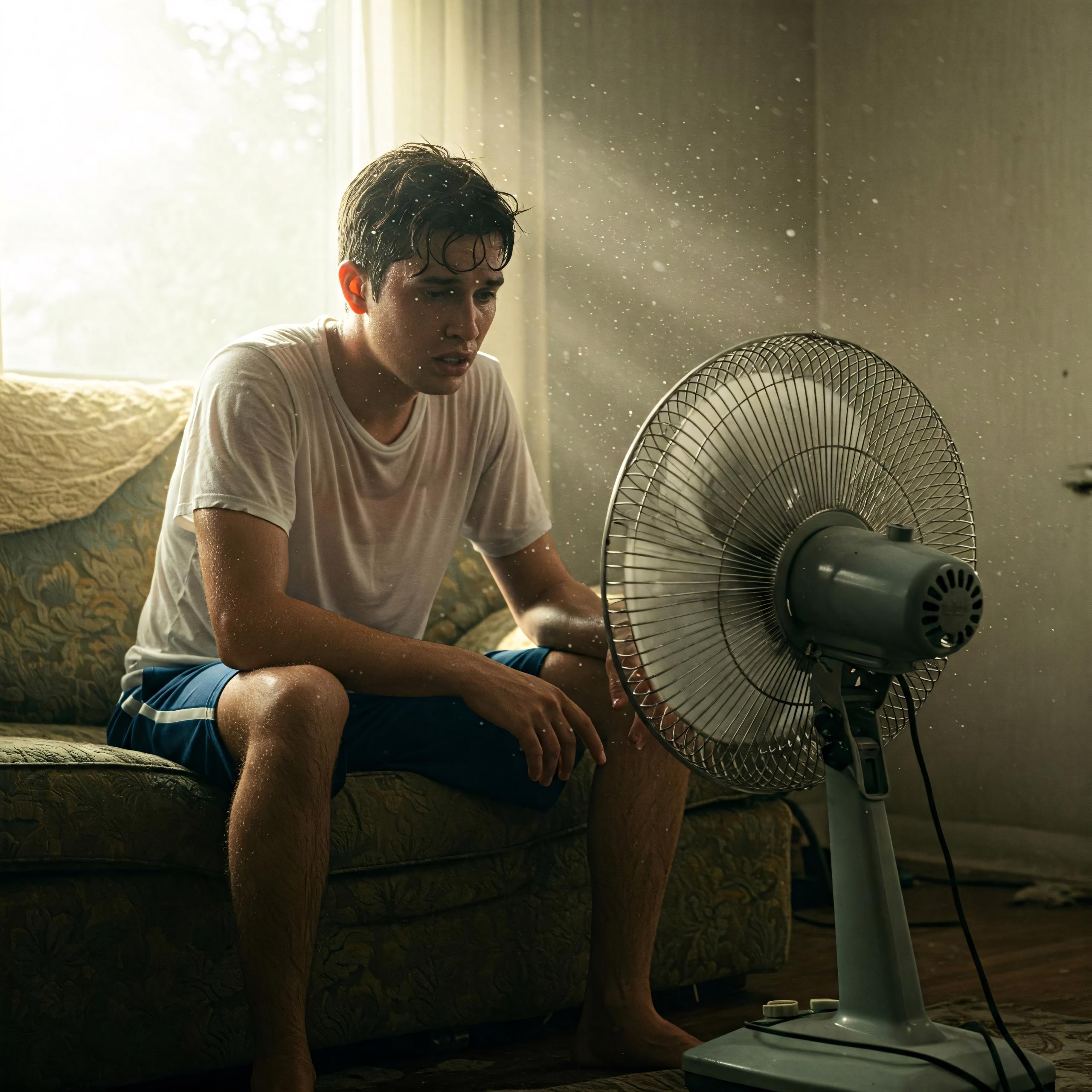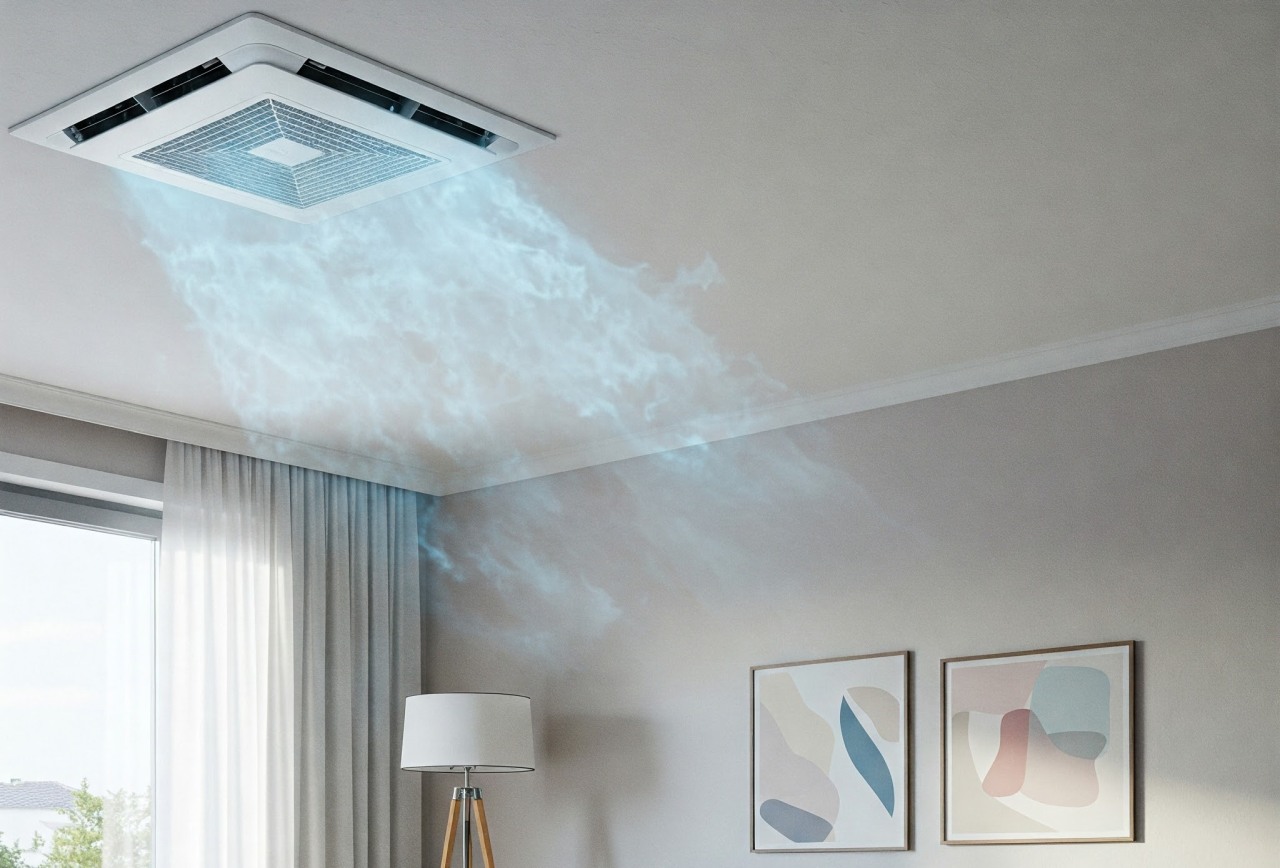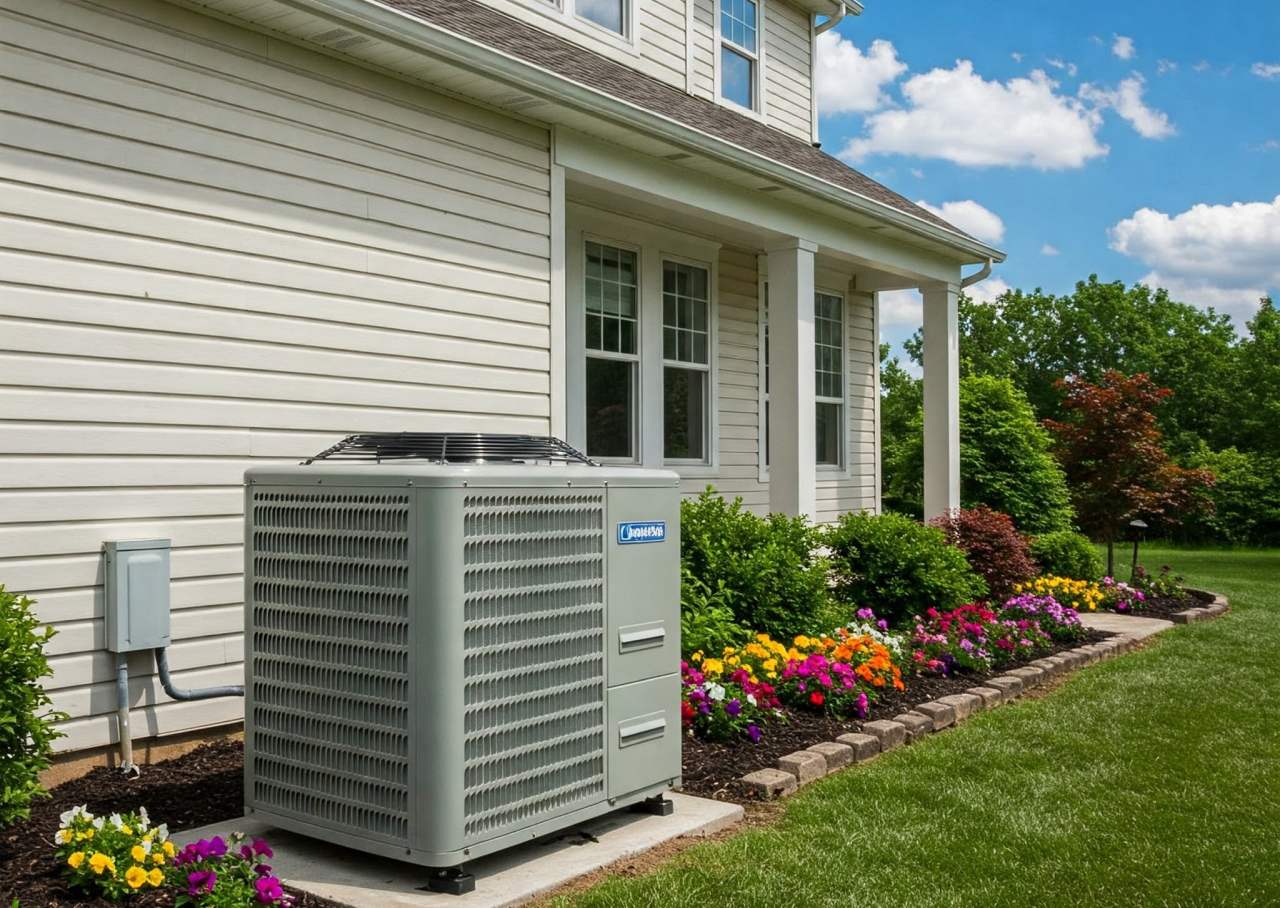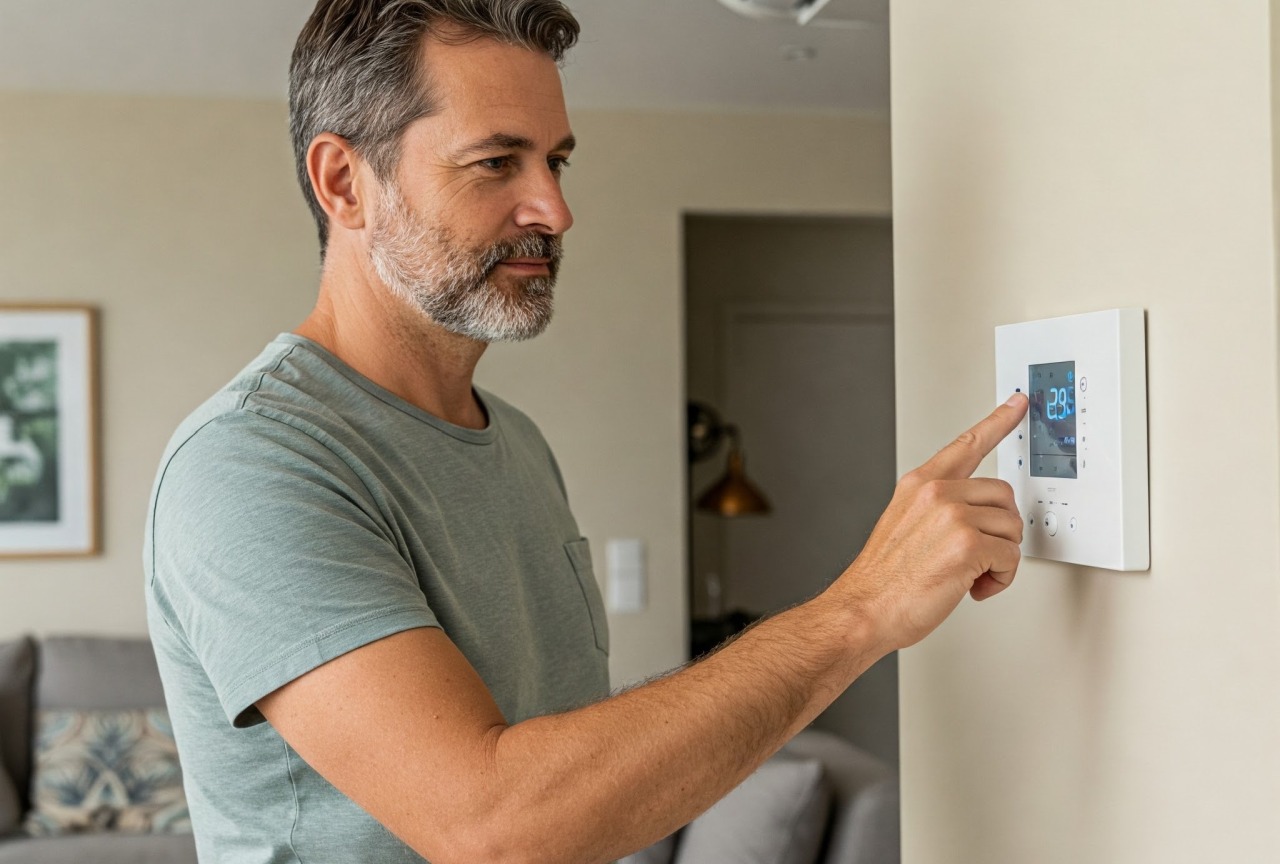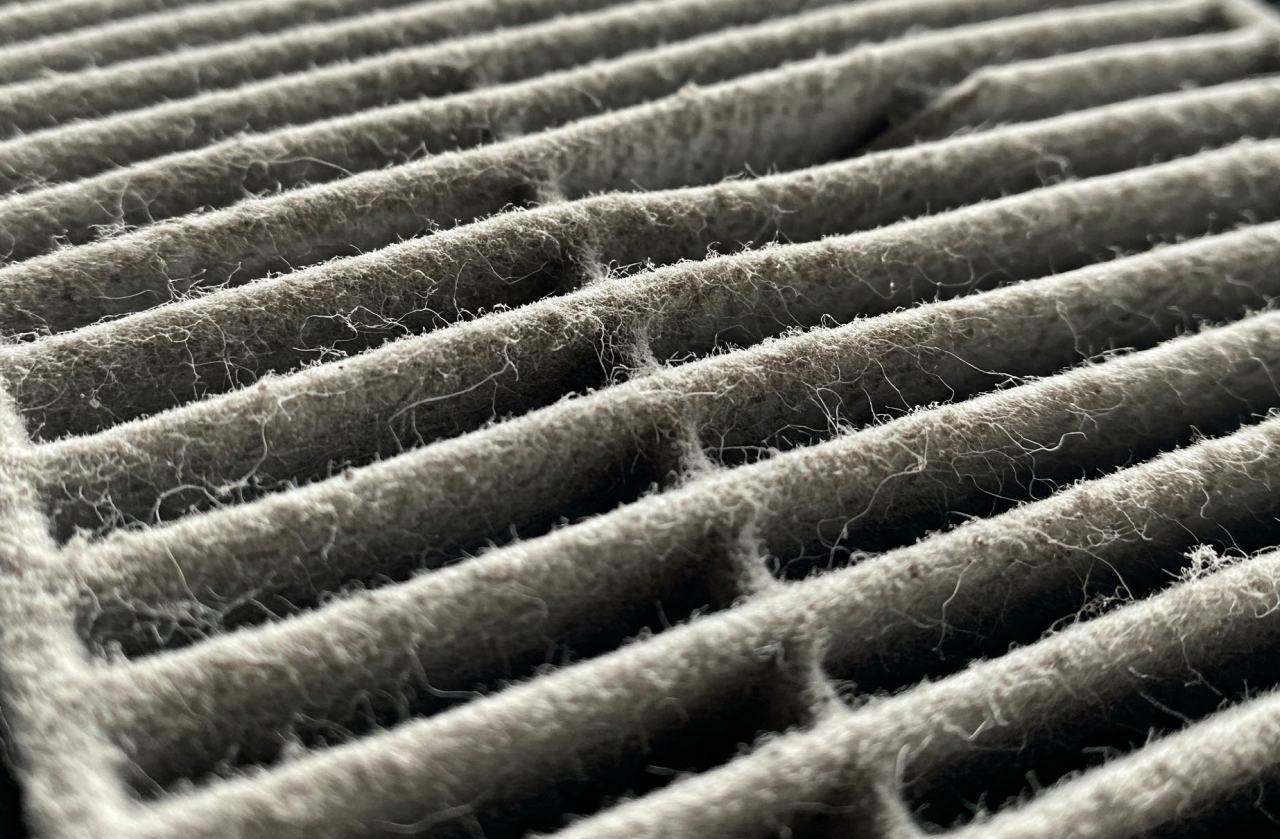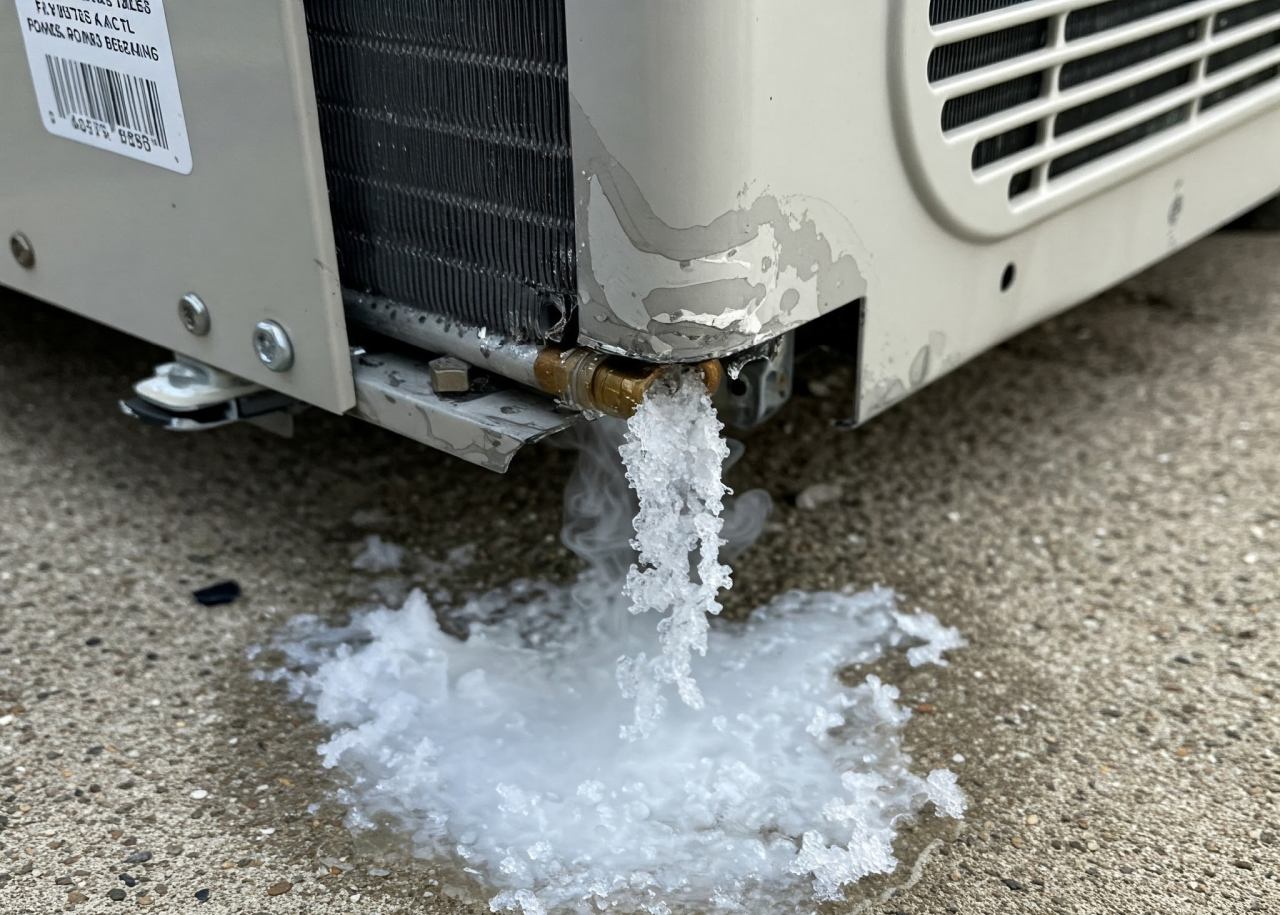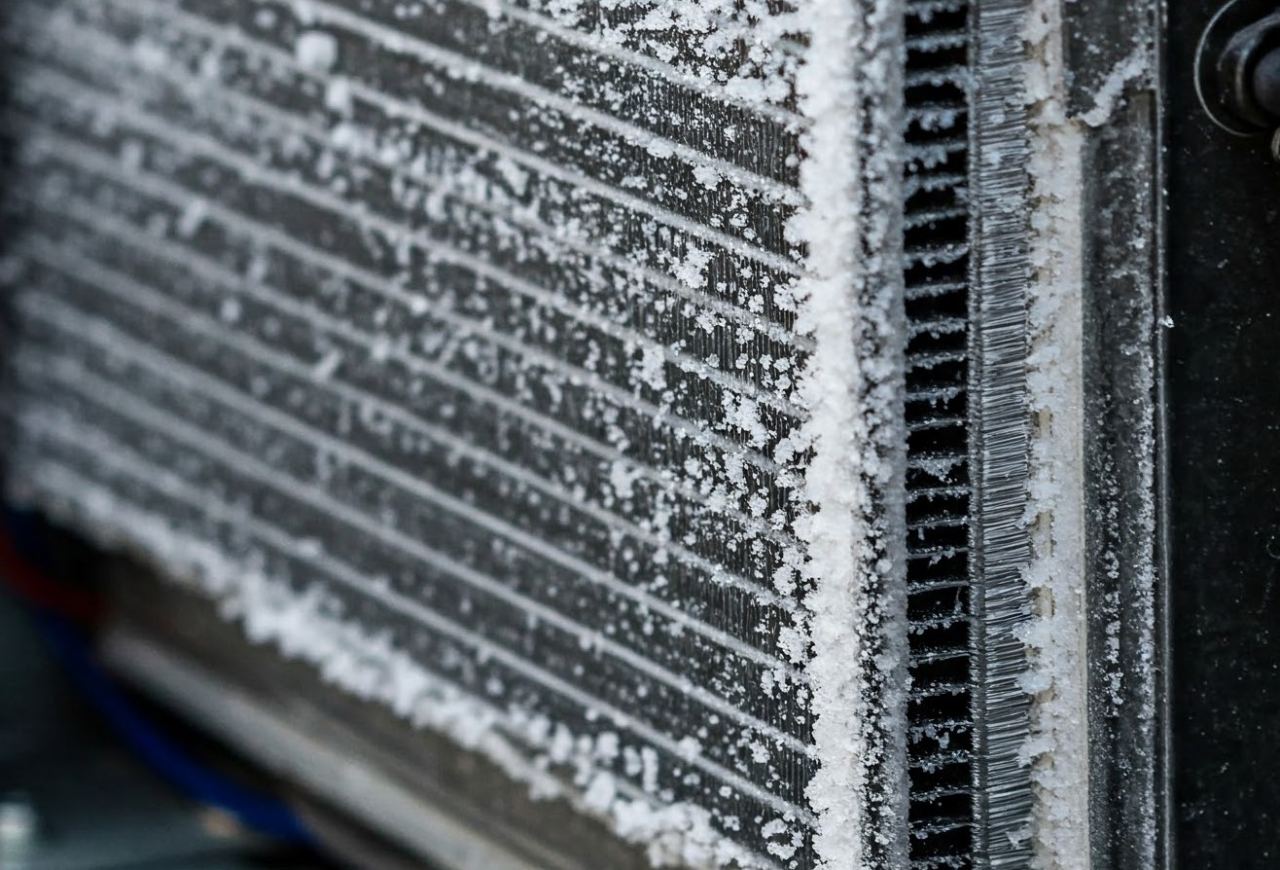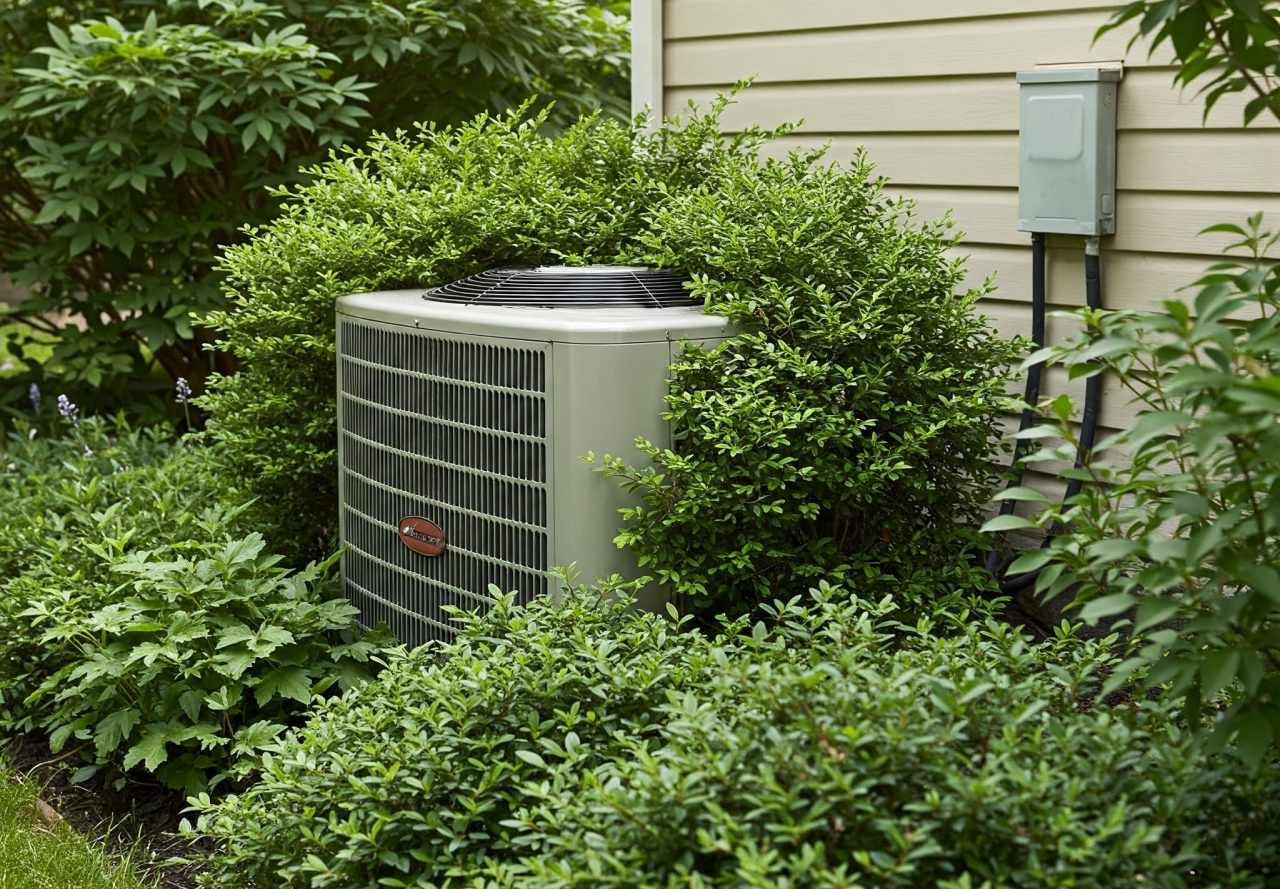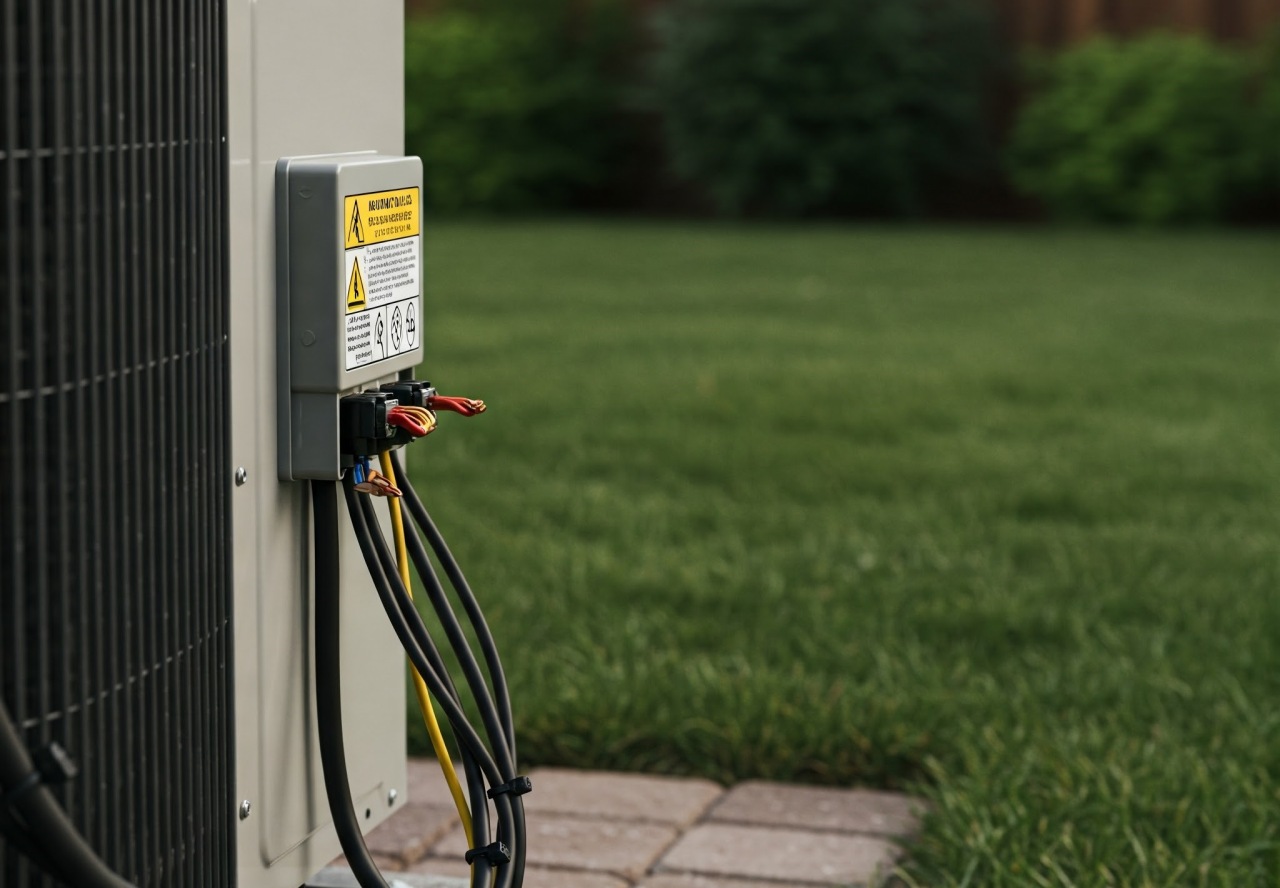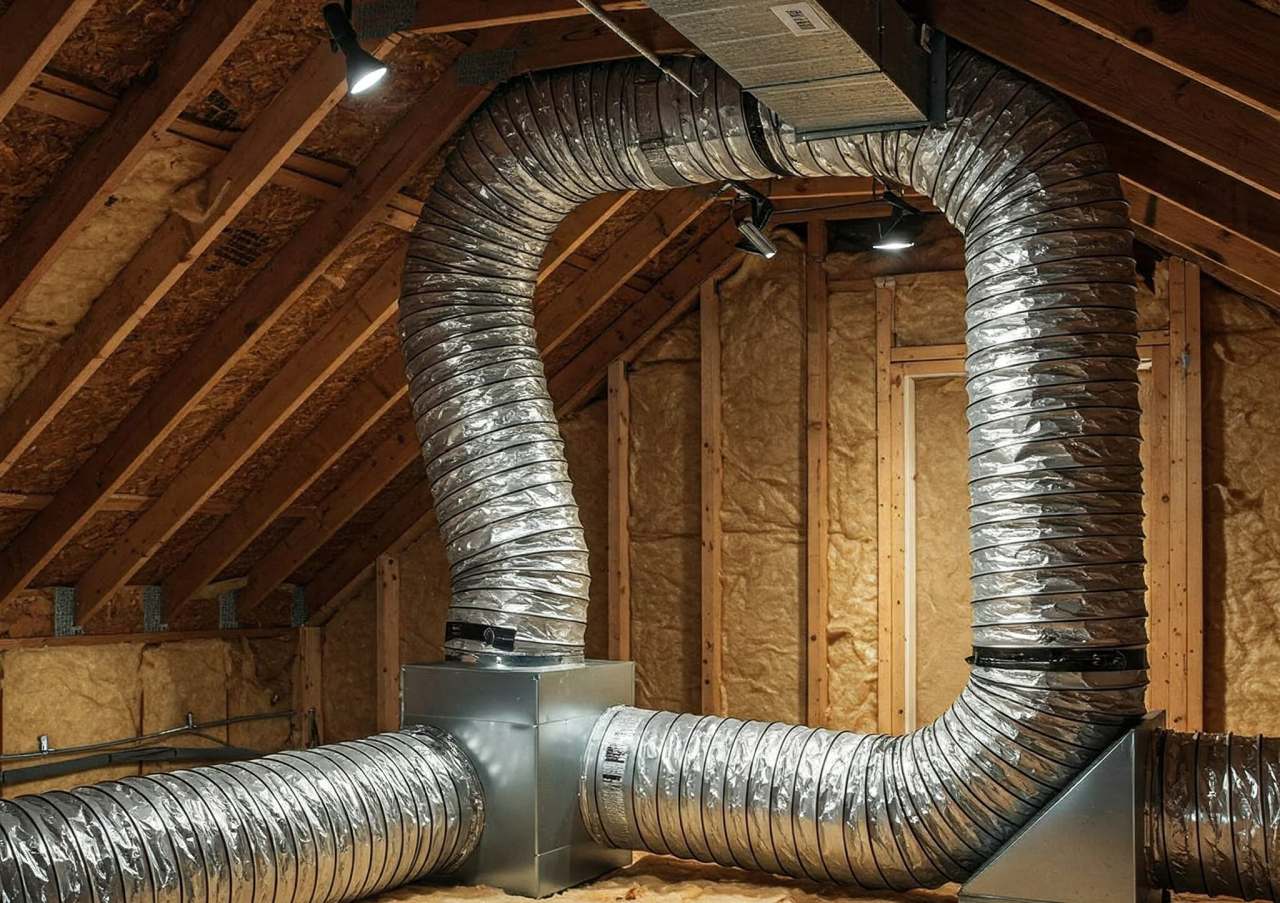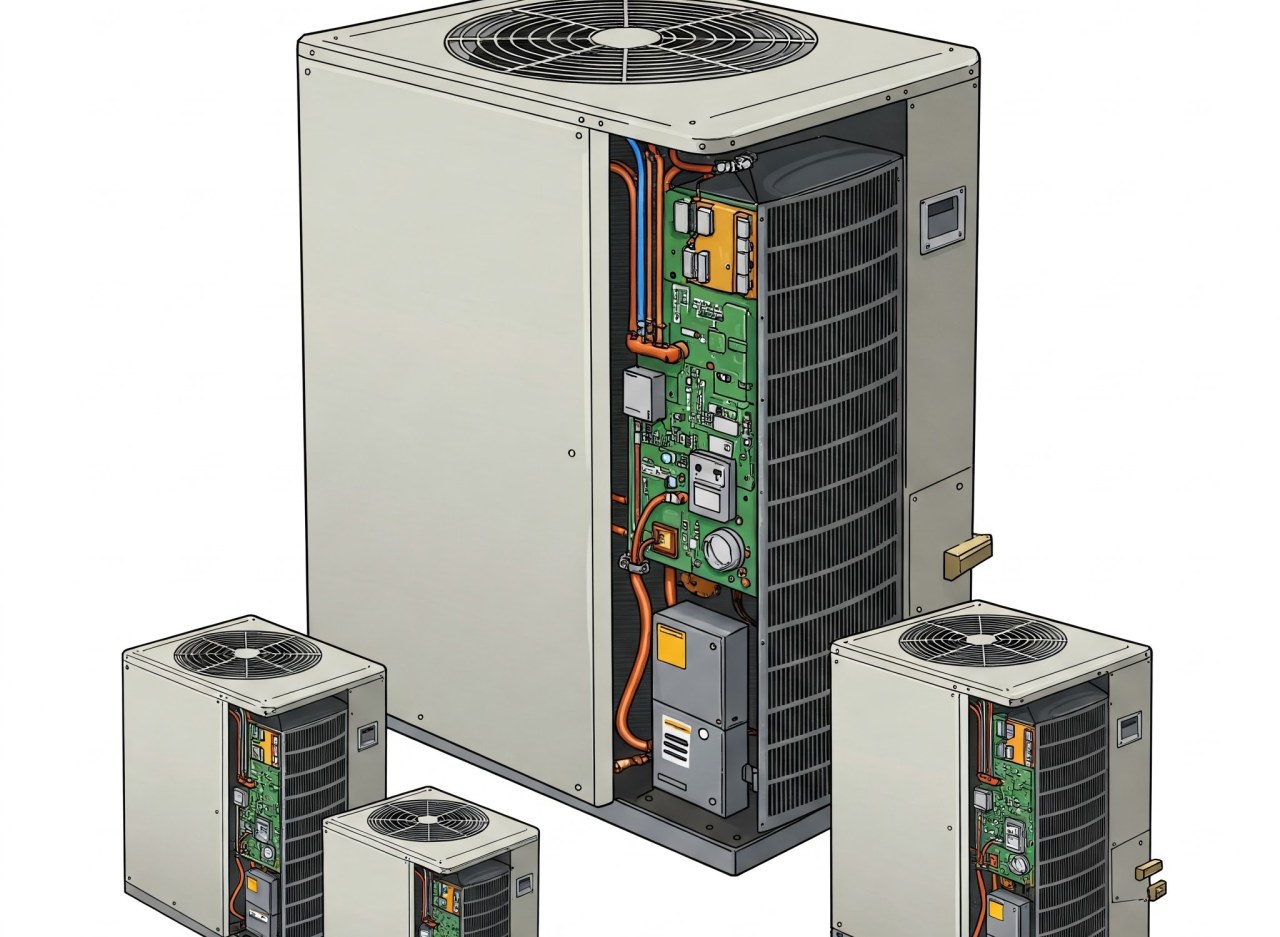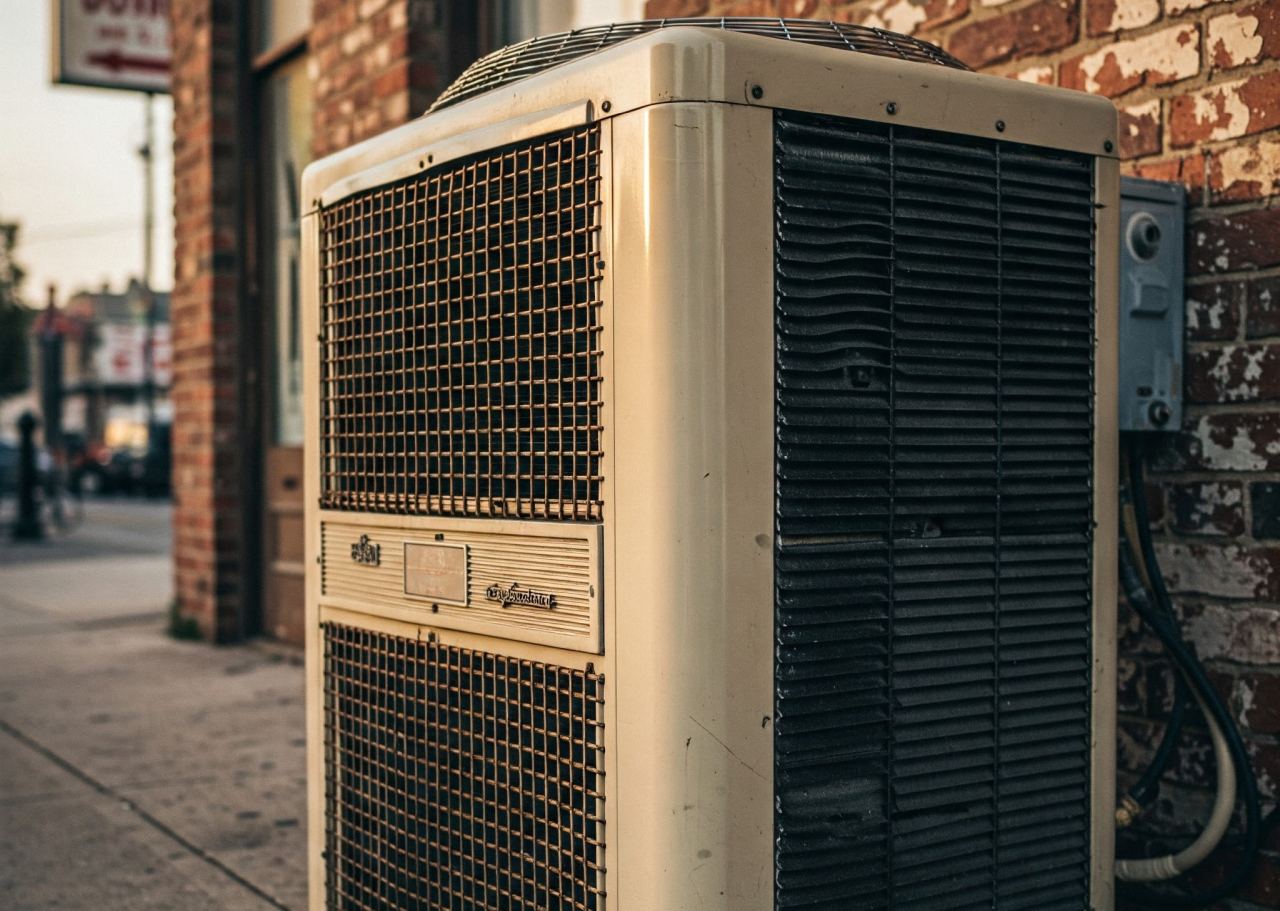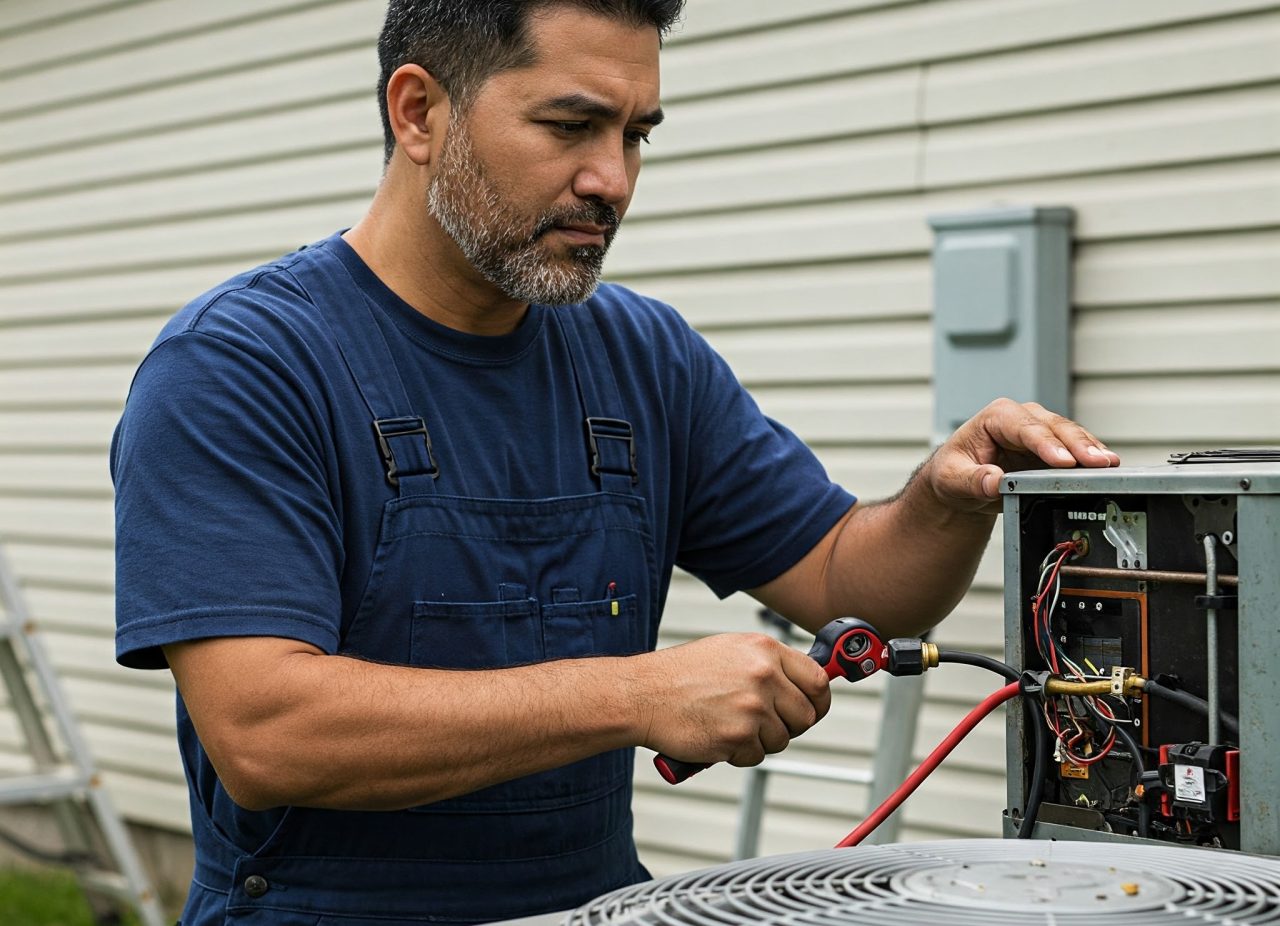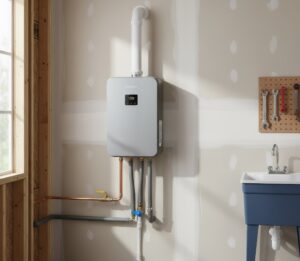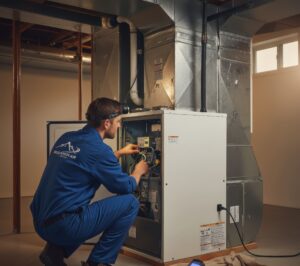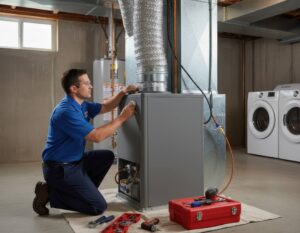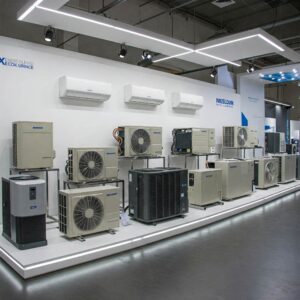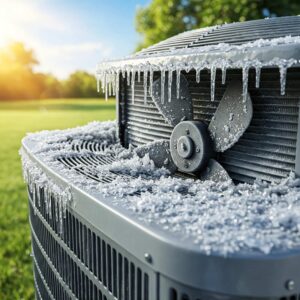If your AC is running but blowing warm air rather than cold air, something’s wrong—but what?
The good news is that the solution could be very simple. The bad news is that it could require AC repairs or even a replacement in the worst-case scenarios.
Troubleshooting home AC problems early can prevent simple issues from escalating and causing more damage (and discomfort to your family). So, let’s look at the main reasons why your AC could be blowing warm air—and the possible solutions…
Why Is My AC Blowing Warm Air?
When warm air blows from an air conditioning unit instead of cool air, it’s usually because of a thermostat issue, a clogged air filter, a frozen evaporator coil, a dirty or blocked condenser unit, leaky ductwork, a refrigerant leak, an electrical issue or a poorly sized unit.
Blowing warm air may be only one symptom of these issues. Sometimes, the AC won’t start at all. Finding the reason for the warm air problem is essential to prevent serious (and often expensive) issues.
To discover what the problem may be, we must first understand how home cooling systems work…
MAKE THE RIGHT HEATING & COOLING DECISIONS…
For over two decades, Alberta Mountain Air has helped Calgarians solve heating and cooling problems and maintain ideal comfort levels. Get in touch online for a quote.
How Does AC Work?
The home cooling process involves a carefully balanced interplay of components within a heat transfer system.
Refrigerant has unique properties when pressurized, helping to chill the indoor air while the heat and moisture absorbed from inside the home is transferred to the outside. This process requires a power supply, refrigerant gas, and the free flow of air through a system that includes an indoor evaporator unit and an outdoor condenser unit that houses a compressor.
In central air conditioning, a system of ductwork delivers the cooled air to the rooms of the home; alternatively, ductless systems cool individual rooms.
Regardless of the type of air conditioner, they work very similarly and can experience the same types of problems.
The AC Cooling Process
- Warm indoor air is taken in by the return vent through the filter and blows over the evaporator coil.
- The heat is absorbed into the cold refrigerant, which converts from liquid to gas.
- Cool air is blown back inside to cool the space.
- As the refrigerant is transferred outside to the compressor inside the outdoor unit, it is pressurized to raise the temperature.
- Hot refrigerant reaches the condenser and its heat is expelled and absorbed by the outdoor air.
- The refrigerant instantly cools, which changes it from gas back to liquid form.
- The cooling process is repeated as required.
Main Reasons Why Your AC is Blowing Warm Air—With Solutions
The general rule with AC problems is to have a licensed professional check and resolve the issue. Air conditioners come at a high cost in Calgary and attempting home fixes can jeopardize warranties, home comfort/air quality, the lifespan of your AC unit, and energy costs.
That said, a few basic troubleshooting steps and checks can be performed by homeowners before picking up the phone. Let’s look at the main issues and how to approach fixing them…
Thermostat Issues
One of the most basic problems that can lead to an AC blowing warm air is if the thermostat is set wrongly or malfunctions.
The thermostat communicates with the HVAC system to set the temperature of your home. It communicates the settings specified by the homeowner. Make sure it’s set to COOL with the fan on AUTO and the desired room temperature specified. Sometimes, settings get changed accidentally.
A poorly calibrated thermostat, lack of battery power or an old, malfunctioning thermostat can also interrupt the cooling process in your home. Power surges can also trip the breaker and reset the thermostat to settings that cause warm air to blow from vents.
Solution
- DIY: Check thermostat settings and batteries.
- DIY: Turn down the thermostat and see what happens to the temperature of the air blowing from the AC.
- Professional: If your AC has not been serviced recently or the DIY fixes don’t work, call a professional to check the wiring or replace the thermostat unit.
Dirty or Clogged HVAC Filter
A large proportion of AC problems are due to airflow problems and the main culprit is the HVAC filter.
Filters are responsible for removing dust, pet dander, and other unwanted particles in the home air before they reach the HVAC system. If the filter becomes dirty or clogged, it obstructs airflow and can reduce cooling efficiency by up to 15 percent.
If your AC is blowing warm air and a clogged HVAC filter is to blame, it could be causing silent damage to your AC, furnace, and/or heat pump systems. With airflow impeded, your HVAC equipment must work harder to cool (or heat) the home, causing wear and tear to components, shortening the unit’s life, and potentially raising energy bills.
Solution
- DIY: Inspect your air filter monthly (it’s usually located near the air handler or return air vent).
- DIY/Professional: Change or clean your filter every 4-8 weeks (especially if you have pets, asthma sufferers or renovation projects in the home).
- DIY/Professional: If you have a reusable filter, clean it regularly.
Refrigerant Leak
AC refrigerant is the “lifeblood” of your home cooling system and if there is a leak, low refrigerant levels can affect cooling performance and cause your AC to blow warm air.
Air conditioning is a “closed system” so refrigerant shouldn’t leak from a well-maintained system. If it does, it can create health hazards as well as cooling problems and should be considered an AC emergency.
As well as the warm air blowing, refrigerant leak symptoms include weak airflow, hissing sounds or even the indoor AC unit’s coil freezing up.
Solution
- Professional: Refrigerant leaks require urgent professional troubleshooting, AC repairs, and recharging.
- Professional: Only licensed professionals can handle refrigerant in Alberta.
Frozen Evaporator Coil
If low refrigerant levels cause the evaporator coil in your AC system to freeze, this will further restrict airflow and lead to cooling problems.
Other reasons can lead to a frozen evaporator coil, such as restricted airflow from clogged filters, blocked vents or a broken fan. Whatever the cause, warm air can blow from the AC instead of cool air and energy bills can rise if your AC unit is affected by ice.
Solution
- Professional: Call a professional to troubleshoot the issue.
- Professional: Clean AC coils regularly (part of general AC maintenance).
- DIY: To thaw out the AC unit, switch the power off and leave it for several hours to melt the ice completely.
Condenser Unit Issues
The condenser unit plays an essential role in the heat transfer process, compressing and converting refrigerant gas back into liquid form so that the cooling cycle can be repeated.
If the outside unit is clogged with dust, dirt or debris, airflow can be impeded and, as we know, this can impact cooling. Warm air might blow from the AC inside the home—and bear in mind that AC compressor problems are among the most expensive to fix.
Solution
- Professional: If the condenser runs into problems, call a professional HVAC technician.
- DIY: Regularly check the area around your outdoor unit.
- DIY: Clear vegetation and debris to avoid dirt or damage to the fins.
Electrical Issues
AC units require a continuous electricity supply to function. Any interruptions can lead to multiple issues and could have many causes.
A tripped breaker will result in the AC not kicking on when needed, as might a faulty capacitor or contactor.
If your AC system is running but not blowing cold air, it must be receiving some electricity so a professional may need to check the electric setup of your AC to troubleshoot the issue.
Solution
- DIY: Never attempt to troubleshoot electrical issues with a home AC.
- Professional: Call a professional to troubleshoot and repair the issue.
Ductwork or Vent Issues
In central air conditioning systems, ductwork should deliver cool air to all the rooms of your home.
If ductwork leaks or the vents are blocked by debris, this will affect the cooling efficiency of your system. Warm air from the vents could even mean a ductwork leak due to collapsed or damaged ductwork, which allows the cool air to escape and allow warm air to penetrate the system.
Energy Star estimates that 20-30 percent of air is lost through duct leaks in homes.
Solution
- DIY: Vents should be kept clear of furniture and other items that may block airflow.
- Professional: Repairing ductwork requires a licensed HVAC technician.
An Incorrectly Sized AC
When you install a new AC unit, an AC professional should first check the cooling capacity required for your home. This will depend on the home’s square footage, floor plan, exposure to sunshine, insulation, and other factors.
When the necessary upfront checks are not performed, you may end up with an AC unit with the wrong tonnage/BTU rating.
An undersized system may seem to blow warm air instead of cool because it’s not powerful enough to effectively cool the spaces—while an oversized unit may short cycle.
Solution
- Professional: There are no simple fixes and a licensed HVAC technician should check your home’s cooling requirements and recommend a fix (such as adding a ductless system to frequently-used rooms or replacing the AC unit entirely).
Quick HVAC Troubleshooting Checklist for AC Blowing Hot Air
|
AC COMPONENT |
MAIN SYMPTOMS BESIDES WARM AIR |
DIY FIX? |
CALL A PRO? |
|
Thermostat |
General discomfort in the home |
Adjust settings, replace batteries |
If DIY fixes don’t work |
|
HVAC Filter (Clogged) |
Weak airflow, frozen coil, etc. |
Clean or change the filter |
Yes, if issues persist |
|
Refrigerant (Leak) |
Ice on coils, hissing sounds |
No |
Yes |
|
Evaporator Coil (Frozen) |
Frequent cycling, weak airflow |
Turn off the AC and thaw |
Yes- if the AC coil refreezes |
|
Condenser Unit |
Loud noises from the outdoor unit |
Clean around the unit |
Yes, if issues persist |
|
Electricity Supply |
AC not turning on or shutting off regularly |
No |
Yes |
|
Ductwork/Vents |
Weak airflow |
Clear vents of any obstacles |
Yes, if duct repairs or cleaning is required |
|
Incorrectly Sized Unit |
Frequent cycling on/off or inadequate cooling |
No |
Yes |
Aging Systems and Neglect of Maintenance
Two factors will increase the likelihood of your AC blowing warm air instead of cool air:
- An aging system
- Neglect of maintenance
If your AC system stops blowing cold air and is over 15 years old—and none of the simple DIY fixes work—it may be time to bite the bullet and replace your air conditioner with a new, high-efficiency model. Repairs may be expensive and/or parts may not be available.
Regular AC tune-ups—annually, just before the summer—can prevent all types of cooling problems with AC systems and should be diarized by homeowners as a priority.
Failure to follow basic AC maintenance guidelines can invalidate the warranty and lead to AC units blowing warm air before too long.
FAQs
Yes, a power surge can create numerous issues for AC systems, possibly causing a tripped breaker and resetting the thermostat to previous or factory settings.
No, refrigerant leaks, like all emergency AC issues, should be handled only by a licensed and experienced HVAC technician.
Running AC that’s blowing warm air won’t usually cause any safety issues unless the refrigerant is leaking or there is a risk of an electrical fire. It’s best to err on the side of caution and switch the unit off and call a pro. Besides, running air conditioning that’s not cooling can strain parts, shorten the lifespan of the system, and increase electricity bills.
This depends greatly on what the cause of the issue is. The costs can be as little as $100–$200 for basic fixes up to $1,500 or more for major repairs or replacements of some key components.
AC Tune-Ups and Repairs in Calgary
Air conditioning systems are complex and involve many parts working together. A lot can (and does) go wrong, including the AC not cooling.
Fortunately, most home AC problems can be prevented with regular AC maintenance and annual tune-ups. If your AC is blowing warm air, try the simple DIY fixes above but take no chances—call a professional if in any doubt.
All HVAC professionals at Alberta Mountain Air are SAIT-certified and can help you make the right heating and cooling decisions. So, if you’re in Calgary and considering your heating and cooling options, contact us online.
